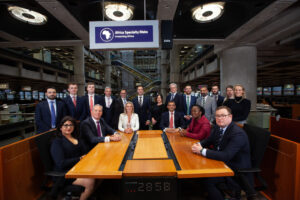- Augmented auto underwriting (AAU) showcases AI’s promise in the insurance field
- AAU is both a journey and destination that progressive insurance organizations need to consider for future operations
- AAU can significantly increase straight-through processing (STP) rates, reduce the need for separate medicals, lengthy decision-making processes, and more
For all the commentary suggesting otherwise, insurance still has an appetite for innovation. If the insurtech sector is any indication, then an interest in and requirement for new solutions is being recognized and addressed.
It may not employ the language of disruption that runs through the wider fintech market, it may be short a few unicorns and unable to boast some of the record-breaking funding rounds, but a quiet tech revolution has been building in insurance nonetheless. Hence the advent of automated underwriting facilitated by artificial intelligence and advanced analytics (AI).
Where insurtech does overlap with its more vocal fintech counterparts is in the greater use of AI to solve age-old problems around deriving actionable and explainable insights from data.
Webinar: Will the agent of the future be fully digital? Sign up here!
We are at a point where the embracement of AI is about to step up a gear. The global value of insurance premiums underwritten by AI has reached an estimated US$1.3 billion this year as stated by Juniper Research, and is expected to top US$20 billion in the next five years.
AI remains part of a more complex ecosystem of data gathering and analysis. It can apply new technologies to get the best out of the already established and still-emerging data sources that feature in underwriting offices around the world.
It is more helpful therefore to see AI as the differentiating factor in the latest generation of insurance IT – augmented automated underwriting, or AAU for short.
AAU gives insurers the ability to spot patterns and connections that are, frankly, either invisible to the human eye or which take normal, human-assisted processes unfeasible amounts of time and resources to identify. AAU can take into account all of the rich complexity of the human experience. It can spot the nuances and individualities that populate the life market, for example, and translate those into accurate policies.
AAU can significantly increase automation and straight-through processing (STP) rates, as well as reduce the need for separate medicals, repeated questions, lengthy decision-making processes, and drastically increase the speed at which a potential insurer can get a quote and cover – while continually improving the way risk is calculated and managed.
Importantly, combining auto-underwriting technology and advanced analytics with domain expertise and risk management, can allow for the risk of implementing AI to be quantified and managed. The latter is the key differentiating factor for insurers to succeed when implementing AI sustainably.
This is good news for customers who are no longer only looking for the lowest price, but also looking for convenience. This is particularly true in emerging Asia Pacific (APAC) markets such as Thailand and the Philippines. It’s no longer the cheapest insurance that will win the race, but the one with the most up-to-date technologies and best user experience.
AAU is an example of the realization of AI’s promise. As such, it’s set to become one of the key talking points and disruptive technologies of the insurance industry globally. The winners of the present are those who can use the new technology cleverly and capture all the ‘convenience hungry’ customers. The rules of the game are continuously shifting, and it’s those who can adapt quickest who are set to win.









